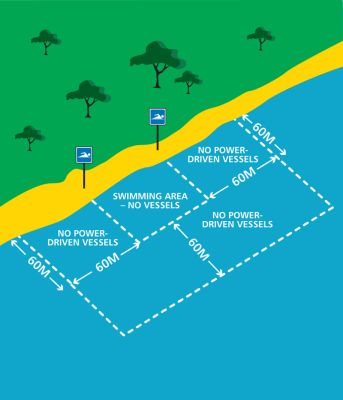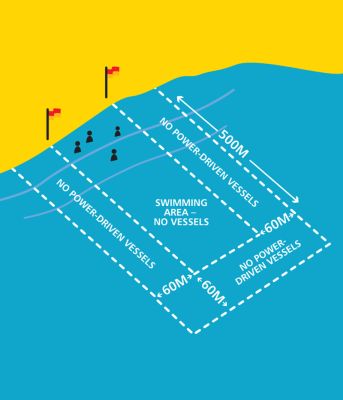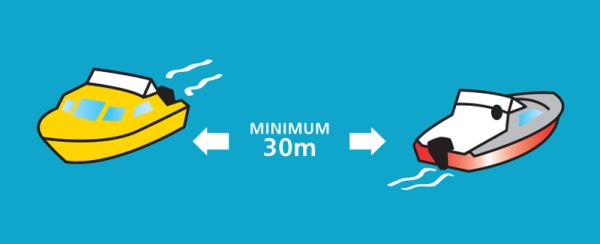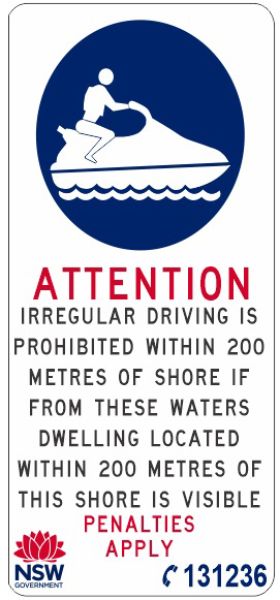Keeping a safe distance on NSW waterways
When you're out on the water, you must always keep a safe distance from people, other vessels, structures and the shore. Here are the rules.
Safe distance
All vessels must keep a safe distance from people, other vessels, structures and the shore. A safe distance gives you enough space to avoid a collision, injury to people, or damage to things.
As the skipper, you must constantly judge your distance from other vessels and people around you. When judging, you must always consider the circumstances and conditions – for example, the weather, visibility, other vessels, your speed and any obstructions.
Minimum distances
You must always keep a safe distance. In certain situations, there are also specific minimum distances you must keep from people, other vessels, structures and the shore.
The only exceptions to keeping these minimum distances are when you're:
- supporting swimmers or divers in the water
- launching or removing your vessel from the water
- in a paddlecraft or rowing vessel – for example, a canoe, kayak, surf ski or rowing boat
- in a sailing vessel up to 5.5m long without an engine (including a sailboard or kiteboard)
- participating in Surf Life Saving NSW or lifeguard activities.
When you're in one of these vessels or situations, or if it's not possible to keep the minimum distance, you must always keep a safe distance and travel at a safe speed.
From people
Powered vessels – including sailing boats over 5.5m long and personal watercraft (PWC) – must keep a minimum distance of 60m from:
- people in the water, including swimming and surfing areas
- the boundaries of designated swimming areas and surf zones (marked by signs)
- a dive flag or float.
Take extra care when you're within 200m of divers and spearfishers – they can be up to 100m from their float or flag.



From other vessels, structures and the shore
Powered vessels – including PWC – travelling at a speed of 6 knots or more must keep a minimum distance of 30m from:
- other vessels – including when these vessels are moored or at anchor
- structures – including jetties, bridges and navigation markers
- the shore.

When you're driving a PWC, you must not drive in an irregular manner when:
- you're within 200m of shore within a PWC restriction Zone, or
- you're within 200m of shore in all waterways, when one or more dwellings are visible from the water and located within 200m of shore.
Driving in an irregular manner includes:
- driving in a circle or other pattern
- weaving or diverting
- surfing down or jumping over or across a swell, wave or wash.

From naval vessels
All vessels must keep a minimum distance from the 'moving exclusion zones' around naval vessels. When a naval vessel is underway, you must keep a minimum distance of:
- 200m from the bow
- 60m from the side.
When a naval vessel is at anchor, the minimum distance is 60m.
When towing
There are minimum distances you must keep when towing. These minimum distances apply to your vessel, your towing equipment and the person being towed – see Towing a person.
From whales and dolphins
You must also keep minimum distances from whales, dolphins and other marine life.